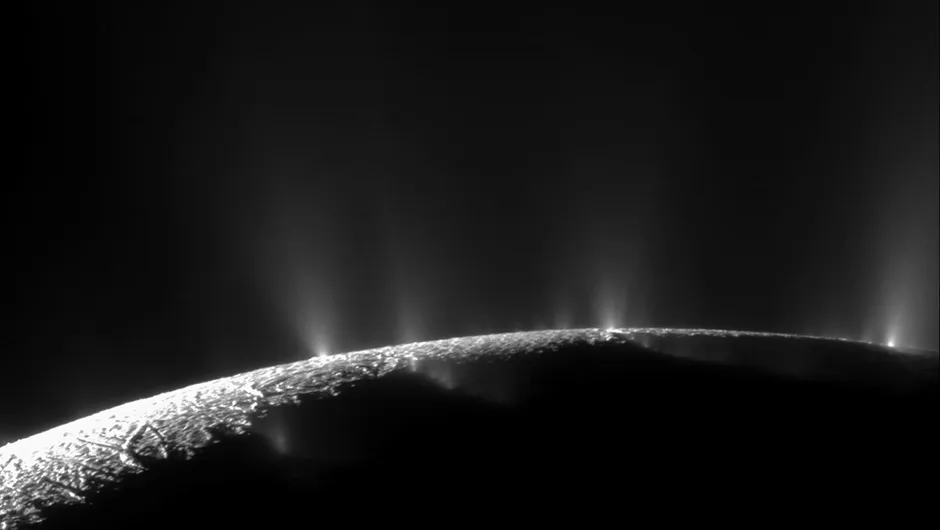Data from the Cassini mission has revealed the interior of Saturn's icy moon Enceladus could be more complex than initially thought. A team at the Southwest Research Institute has created a new geochemical model showing how carbon dioxide originating from beneath the moon's icy surface could be controlled by chemical reactions at the bottom of its ocean.
Enceladus has a frozen crust, but beneath it lies a liquid ocean, making it one of the best places in the Solar System to look for conditions that could support life.
The Cassini spacecraft studied Enceladus throughly during its mission at the Saturnian system, which lasted between 2004 and 2017, including diving through plumes of water vapour erupting through the moon's ice crust out into space.
Read more about the Cassini mission:
- Cassini begins Grand Finale
- Cassini team weighs Saturn's B ring
- Mission end: Cassini's final moments
Cassini completed this daring dive during its close flyby of Enceladus on 28 October 2015, just before the mission's end.
Studying data samples collected from this plume, the research suggests the moon's interior is more complex than previously thought.
Mass spectrometry information gathered by the Cassini spacecraft shows an abundance of CO2 that could be explained by geochemical reactions between Enceladus's rocky core and liquid water from its ocean.
"By understanding the composition of the plume, we can learn about what the ocean is like, how it got to be this way and whether it provides environments where life as we know it could survive," says SwRI’s Dr. Christopher Glein, lead author of a paper revealing the research.
"We came up with a new technique for analysing the plume composition to estimate the concentration of dissolved CO2 in the ocean. This enabled modelling to probe deeper interior processes.
“Enceladus appears to demonstrate a massive carbon sequestration experiment. On Earth, climate scientists are exploring whether a similar process can be utilised to mitigate industrial emissions of CO2.
"Using two different data sets, we derived CO2 concentration ranges that are intriguingly similar to what would be expected from the dissolution and formation of certain mixtures of silicon- and carbon-bearing minerals at the seafloor."

Enceladus's interior complexity could also be a result of hydrothermal vents in the moon's interior.
This is much like Earth's ocean floor, where hydrothermal vents emit warm fluids rich in minerals that allow ecosystems to thrive.
Could the same processes be creating conditions suitable for life to thrive below the surface of Enceladus?
“The dynamic interface of a complex core and seawater could potentially create energy sources that might support life,” says SwRI’s Dr. Hunter Waite, principal investigator of Cassini’s Ion Neutral Mass Spectrometer (INMS).
“While we have not found evidence of the presence of microbial life in the ocean of Enceladus, the growing evidence for chemical disequilibrium offers a tantalising hint that habitable conditions could exist beneath the moon’s icy crust.”
“Distinct sources of observed CO2, silica and H2 imply mineralogically and thermally diverse environments in a heterogeneous rocky core,” says Glein. “We suggest the core is composed of a carbonated upper layer and a serpentinised interior.”
Hydrothermal oxidation of reduced iron in Enceladus's core could create H2, while hydrothermal activity intersecting carbonated rocks could produce silica-rich fluids, according to the study.
These rocks could also influence the CO2 chemistry of the moon's subsurface ocean via low-temperature reactions involving silicates and carbonates at the seafloor.
“The implications for possible life enabled by a heterogeneous core structure are intriguing,” says Glein. “This model could explain how planetary differentiation and alteration processes create chemical (energy) gradients needed by subsurface life.”
